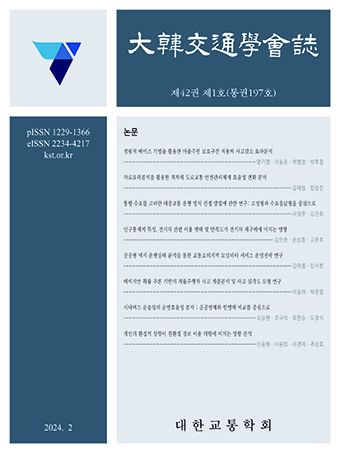Article
Abstract
References
Information
Park K. J., Song K. W., Jung H. Y. (2019), A Study on the Route Selection Method for Demand Response Transport (DRT) Replacement for Bus Services in Vulnerable Areas: Focused on Region Vulnerable to Public Transportation of GyeongSangNam-Do in Korea, Journal of Korea Planning Association, 54(4), 71-78.
10.17208/jkpa.2019.08.54.4.71
- Publisher :Korean Society of Transportation
- Publisher(Ko) :대한교통학회
- Journal Title :Journal of Korean Society of Transportation
- Journal Title(Ko) :대한교통학회지
- Volume : 40
- No :3
- Pages :289-304
- Received Date : 2022-02-04
- Revised Date : 2022-03-02
- Accepted Date : 2022-04-11
- DOI :https://doi.org/10.7470/jkst.2022.40.3.289



 Journal of Korean Society of Transportation
Journal of Korean Society of Transportation







